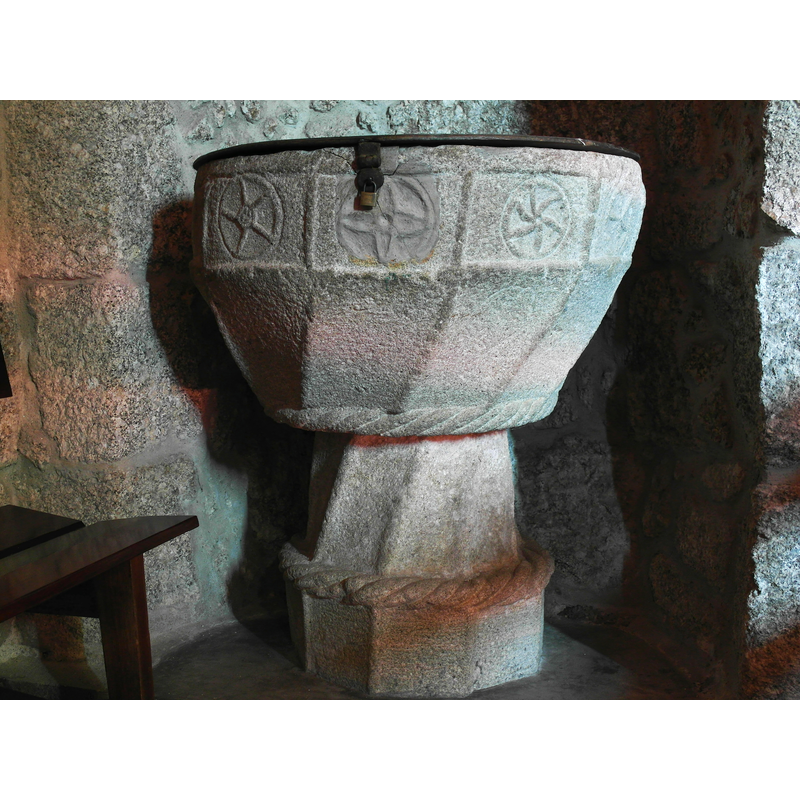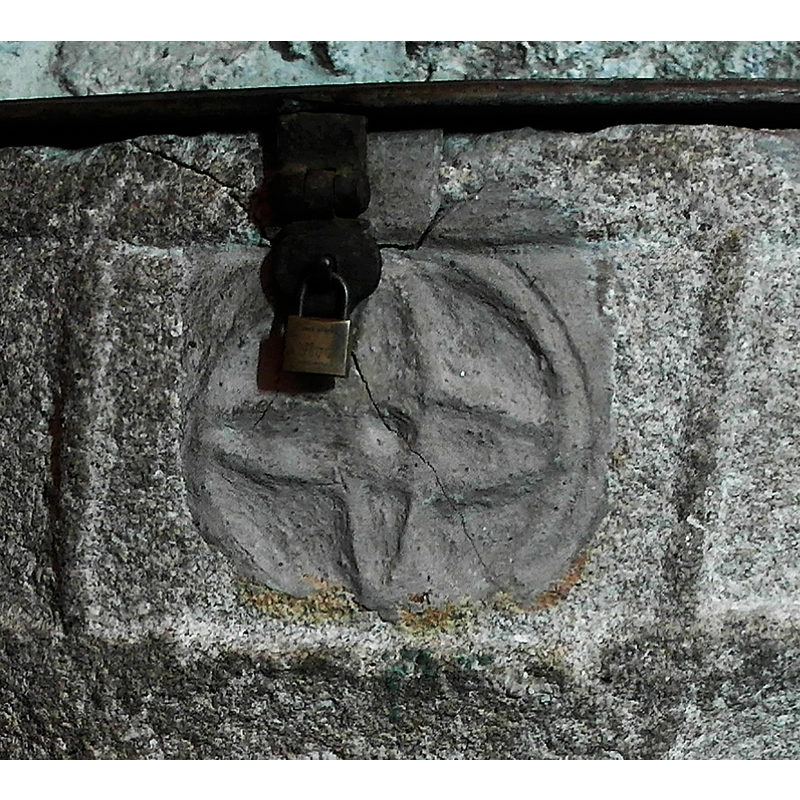Candoso São Martinho

Image copyright © Joost Limburg, 2012
Standing permission
Results: 5 records
B01: design element - motifs - floral, foliage or star - in a circle
view of basin - detail
view of basin - detail
Scene Description: note the cemented patch and un-matching motif around the lock hasp and anchoring
Copyright Statement: Image copyright © Joost Limburg, 2012
Image Source: detail of a digital photograph taken 20 March 2012 by Joost Limburg [www.romanicoportugal.org]
Copyright Instructions: Standing permission
view of font
INFORMATION
FontID: 17982CAN
Object Type: Baptismal Font1
Church/Chapel: Igreja Matriz de São Martinho de Candoso
Church Patron Saints: St. Martin of Tours
Country Name: Portugal
Location: Braga, Norte
Directions to Site: Located in the municipality of Guimarães
Ecclesiastic Region: Diocese de Braga
Century and Period: 15th - 17th century, Late Medieval
Credit and Acknowledgements: We are grateful to Joost Limburg, of www.romanicoportugal.org, for his photographs of, and notes on the present font
Font Notes:
Click to view
Noted and illustrated in Almeida (1971) as a baptismal font that incorporates motifs of an earlier style. Almeida adds in a footnote that, more than a revival, the appearance of such motifs on mid-13th century and later works is really more a transposition of techniques and themes that were originally designed for woodwork, onto stone. Be that as it may, such motifs are plentiful on stone works of the Romanesque period in different countries. Despite Almeida's theory, the particular case of this font is one of revival of motifs common in the Romanesque period, now used in a more stylised form on a work that is clearly of a later period. The coarse granite baptismal font consists of a polygonal basin with a tall underbowl chamfer that has been carved on a torsade shape; the sides of the basin have framed panels with a motif in each, the motifs being stylised versions of a common Romanesque motif, the inscribed floral or star; the only exception is the motif in the panel on which the padlock is, but this is not an original carving on the granite; at some point the patch was replaced with plaster or cement and four-petal floral motif entered there, clearly at odds with the rest of the decoration on this font; the lower end of the underbowl has a rope moulding; the pedestal base is a plain torsade, slightly splaying outwards, and the lower volume has plain vertical sides with a rope moulding atop. The wooden cover is round and flat, with a hasp that locks on the side of the basin [cf. supra]; the cover appears to be modern. [NB: the original church here is said to have existed already in the mid-11th century, but we have no information on its earlier font].
MEDIUM AND MEASUREMENTS
Material: stone, granite
Font Shape: polygonal (mounted)
Basin Interior Shape: round
Basin Exterior Shape: polygonal
LID INFORMATION
Date: modern?
Material: wood
Apparatus: no
Notes: [cf. FontNotes]
REFERENCES
Almeida, Carlos Alberto Ferreira de, "Primeiras Impressões sobre a Arquitectura Românica Portuguesa", 2 (1971), Revista da Faculdade de Letras: Serie de Historia, 1971, pp. 65-116; p. 77, fn44 and fig. 4
![several stylised versions [cf. FontNotes]](/static-50478a99ec6f36a15d6234548c59f63da52304e5/compressed/1120504028_compressed.png)
![one of the stylised motifs [cf. FontNotes]](/static-50478a99ec6f36a15d6234548c59f63da52304e5/compressed/1120504029_compressed.png)

